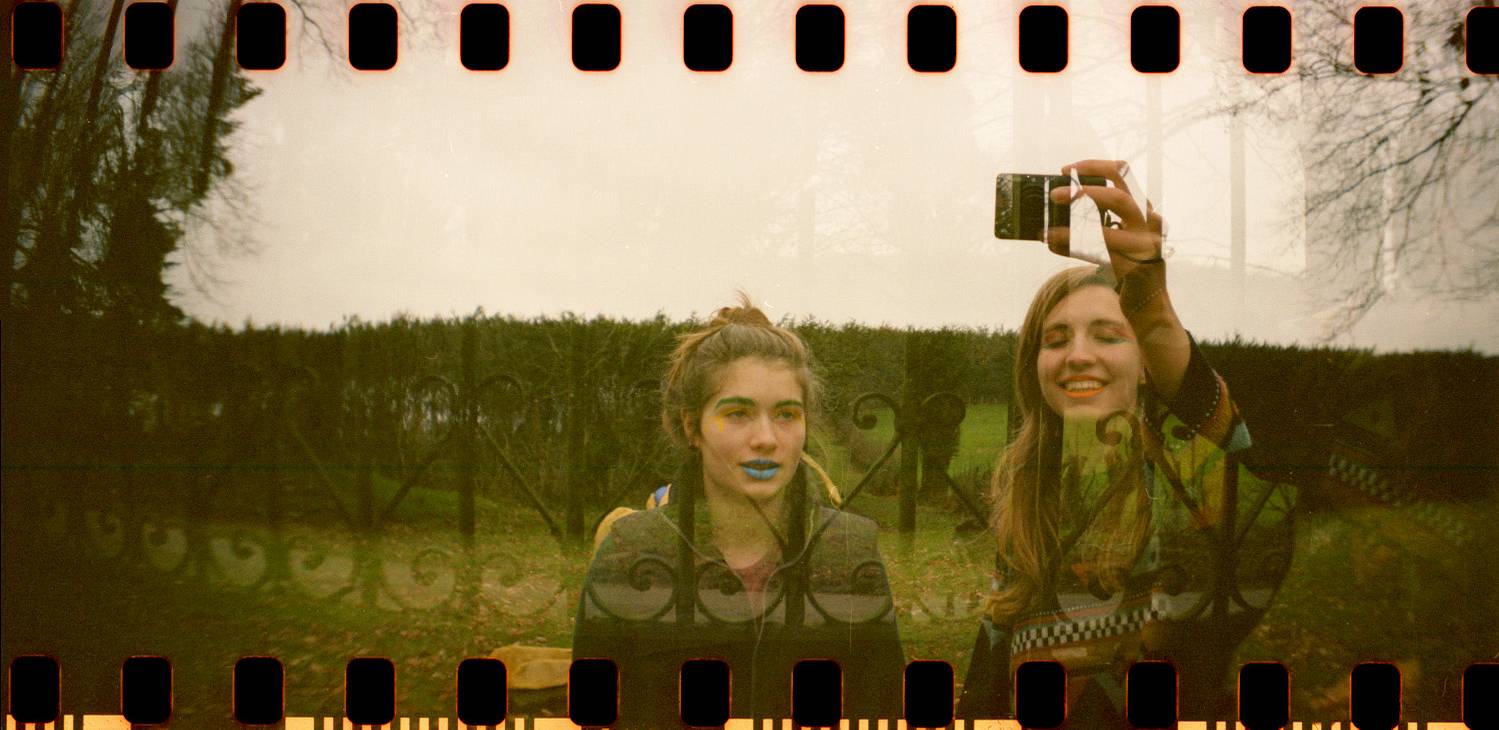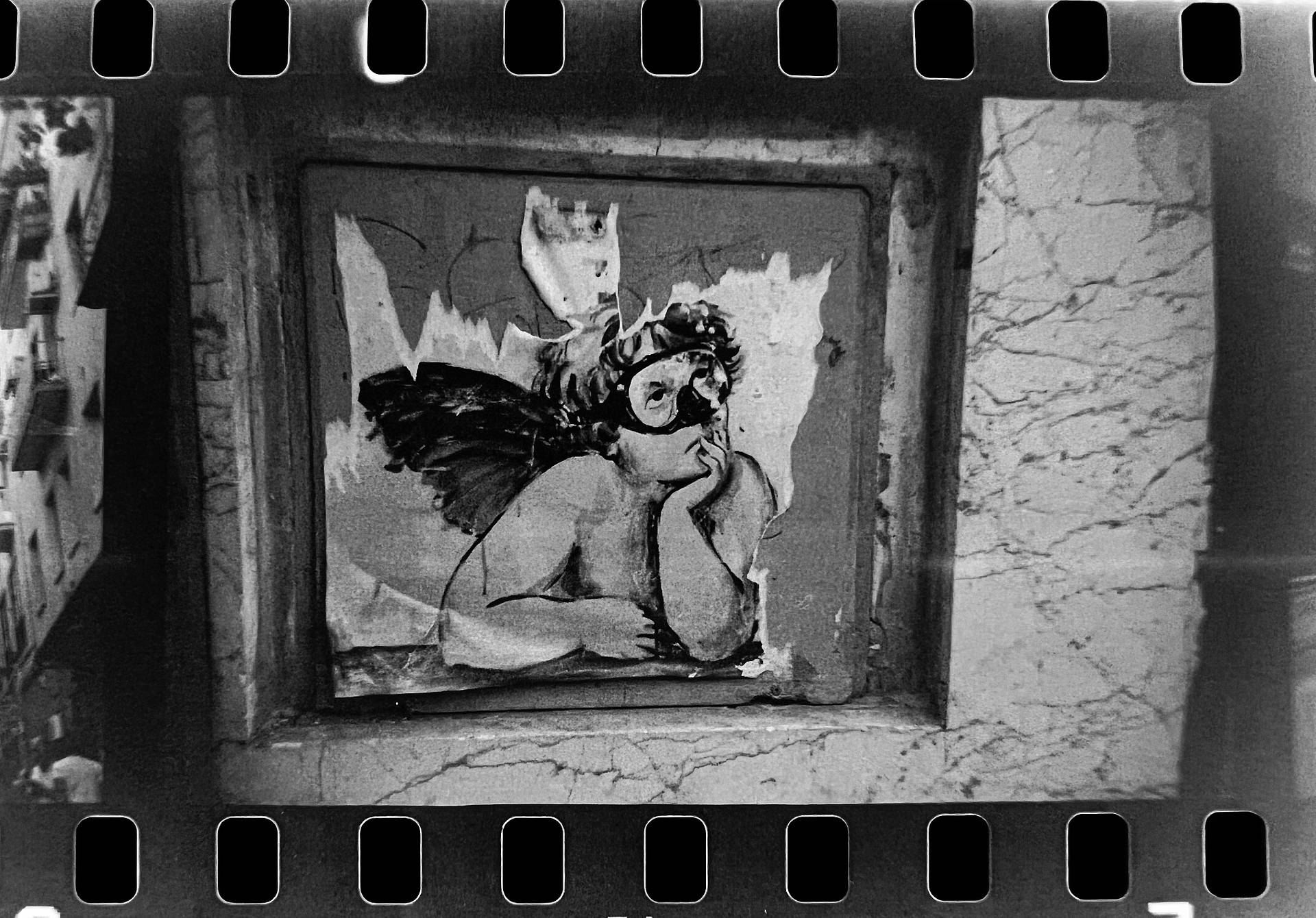How to scan sprocket holes and film borders?
Much like other film formats, you can scan sprocket holes and film borders using scanners like Epson, or dedicated film scanners like the Lomography DigitaLIZA scanning kits.

1. With flatbed scanners
Scanners like Epson usually come with scanning software like EpsonScan or SilverFast. To scan sprocket holes and film borders, you will be needing a scanning mask like the DigitaLIZA scanning mask. Insert your film into the kit and proceed with scanning.
In the scanning software, set your document type to film, and choose the film type and resolution. Afterwards you can use a photo-editing software to adjust the borders of your scanned images, and edit the size, brightness, contrast, color balance, saturation and more.
When scanning with sprocket holes visible you may encounter a common problem where your scanner produces an unwanted color cast, resulting in a washed out image. This happens because scanning software can get confused by the exposed sprockets and so produces inaccurate colors. Luckily, when using flatbed scanners there is a simple fix for this issue. For explanations on how to solve the problem you can read this article if you’re using a Canon Scanner and this one for an Epson Scanner.
2. With the Lomography DigitaLIZA+ and DigitaLIZA MAX

Scanning with the DigitaLIZA+ and DigitaLIZA MAX means you won’t be needing a flatbed scanner and can scan your photos using a digital camera or just your smartphone. Just insert your film into a DigitaLIZA scanning kit with the 35 mm holder, and take photos using your digital camera or smartphone.
Likewise, you will be needing a photo-editing software or a phone app to crop and enhance the digitized images as your prefer.
Be sure to check out our dedicated DigitaLIZA page for tutorials and our Scanning Like a Pro pdf guides!
Anything missing?
Can’t find an answer to your question? Or do you have some useful advice to add to one of our courses? We want to build the world’s largest analogue learning space, so please send any further requests or information to school@lomography.com and we’ll take a look!
More Courses
-
How to scan my film negatives at home
Depending on the method you’re going for, you will be needing some of the following to scan your film negatives: digital camera with macro lens or your smartphone, a tripod, a scanning mask or film holder, a flatbed scanner or dedicated film scanner, a light table/LED panel or scanning kits.
-
What is the LomoLab?
The LomoLab is our film developing and scanning arm of Lomography. Found in Vienna and only available for mainland Europe, you can send in your rolls directly to us at Lomography – LomoLab, Kaiserstraße 34/12, 1070 Vienna, Austria.
-
How and where can I get my film scanned?
Film processing labs that offer film development services will typically also offer scanning services.
-
How to scan 120 film?
Like other film formats, you can scan a 120 film using a flatbed scanner, a dedicated film scanner fit for the 120 film format, paired with a scanning mask like the Lomography DigitaLIZA 120 film scanning mask, or scanning kits like the Lomography DigitaLIZA+ and DigitaLIZA MAX which comes with a 120 film holder.
-
What are the different methods for scanning a film negative?
If you’re looking to invest in your own film processing equipment, or simply want to try out scanning on your own, here are the most common methods and what you will need to scan your film negatives.
-
Can I scan my film negative using my smartphone?
The answer is yes! You can scan 35 mm and 120 film negatives using just your smartphone with scanning kits like the Lomography DigitaLIZA Max and our free in-browser Lomo DigitaLIZA LAB tool or by installing a film scan app on your phone to invert and enhance the images.
-
How to scan panoramic film negative images?
You can scan panoramic film images using a flatbed scanner, medium format scanner, a scanning mask like the DigitaLIZA scanning masks, or the DigitaLIZA scanning kits.
-
How to scan overlapping frames?
You can scan film negatives with overlapping frames with a film holder or a scanning mask, a flatbed or dedicated film scanner, or a scanning kit like the DigitaLIZA+ and DigitaLIZA MAX.
-
How to scan 110 film?
There are a few ways to scan 110 film, such as with Lomography’s dedicated DigitaLIZA 110 Scanning Mask, or Lomography DigitaLIZA+ and Digitaliza Max with a modified frame.